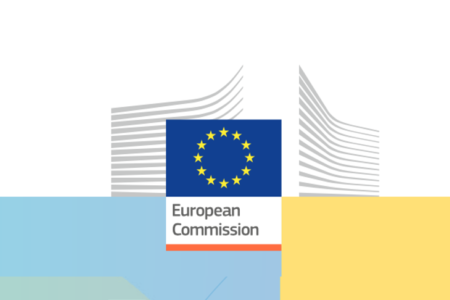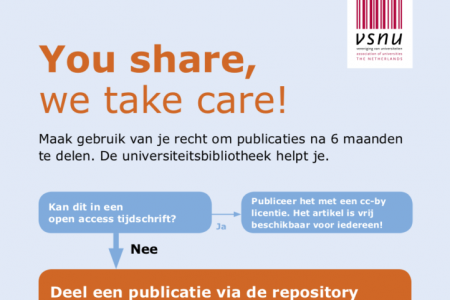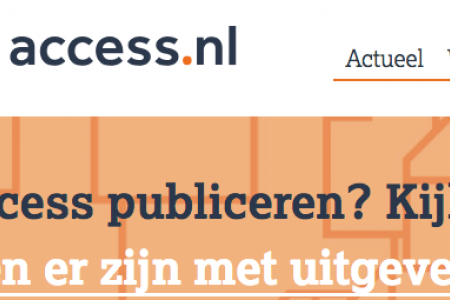Use the Rights Retention Strategy: Publish with a publisher while retaining sufficient rights for full open access
In this blogpost, we explain how you can publish scholarship with a publisher and yet retain sufficient rights to the publication in order to make it available in immediate open access, regardless of the distribution model of the publisher.
Introduction
Authors, as the original copyright owners, have a strong position and can decide what they will give away to the publisher. Prior to publication, researchers at Leiden University hold all rights to their scholarly publications. Upon acceptance, many publishers ask to transfer these rights to the publisher. As a result, the author cannot disseminate the publication in immediate open access with a CC BY license. Researchers that would like to retain sufficient rights after publication can make use of the Right Retention Strategy (RRS). With the RRS, authors can disseminate the publication immediately after acceptance and with a CC BY license. Thus making it possible for the authors to make their publication immediately available in a repository, and for everyone to easily reuse the publication. The RRS is intended to circumvent the restrictive conditions publishers impose on authors in their contracts.
How does it work?
- Give prior notice to the publisher
- Provide in the submission letter or in the acknowledgements of the publication the following wording:
Notwithstanding any contract we/I sign with the publisher regarding this manuscript, the author(s) will apply an irrevocable Creative Commons Attribution (CC BY) licence to any Author Accepted Manuscript (AAM) version arising from this submission to make the AAM publicly available under the terms of a CC BY licence from the moment of first publication.
The idea is that this statement at submission has legal precedence over any later publisher’s licensing agreement. - Upon every (re)submission, add the CC BY license to all versions of the manuscript:
- add the text "CC-BY 4.0" and or the CC BY logo and
- link to the URL describing the CC-BY 4.0 licence on the Creative Commons.org website: CC BY 4.0 or the CC BY logo.

CC BY logo
- Provide in the submission letter or in the acknowledgements of the publication the following wording:
- On acceptance deposit the AAM in the Scholarly Publications repository of Leiden University.
Publications registered in Scholarly Publications will be found in Google Scholar and automatically be indexed by many other services such as the repository of the European Commission OpenAIRE.
When you receive an acceptance notification from the journal editor ensure:- to add the CC BY license to the AAM
- register and upload the publication in LUCRIS, and add the CC BY to the file registration in LUCRIS;
- if your research has been funded by a cOAlition S partner such as NWO, ZonMW, Horizon Europe or ERC also add the funding number in LUCRIS.
There are no additional costs for the authors or your institution. The policy typically applies to research articles but there is no legal reason not to apply it to all other types of publication such as book chapters, books and conference proceedings.
What to expect
Most publishers will be happy with or just ignore the RRS statement. Difficulties you may encounter with some publishers are:
- a very few publishers will reject papers before review if they contain a rights retention declaration
- some will quibble but will accept rights retention
- some will ask payment for the license and / or immediate Open Access. Do not pay!
You are fully within your rights to retain the license and under no circumstances is there a legally sound argument to pay a publisher for the rights you inherently hold as the author.
If you have questions about the RRS please contact openaccess@library.leidenuniv.nl
History of the RRS
The Rights Retention Strategy (RRS) was first mentioned by cOAlition S, a consortium of research funding organizations (including NWO) that initiated Plan S. The aim is to prevent assigning copyrights exclusively to publishers and to retain control over the distribution of your manuscripts during the submission and publication process. The final AAM can be uploaded and disseminated in the institutional repository with a CC BY license.
Before cOAliton S, a lot of other institutions introduced this kind of model, Harvard has set up a very successful institutional policy in 2008 that is used by many other universities worldwide; SPARC has provided an author addendum; and recently many institutions adopted the RRS: Tromsø, Edinburgh, Sheffield Hallam, Cambridge, Brikbeck and the Norwegian University of Science and Technology. It is expected that many universities will follow soon.
RRS in the Netherlands
Researchers funded by NWO, ZonMW, Horizon Europe and ERC can make use of the RRS. Funders have formulated this obligation in their contracts. NWO has applied the RRS to all new NWO calls published as of 1 January 2021. Besides funders, there are institutions with an RRS (mentioned above). In case of a funder and institutional RRS researchers can refer to the mandate they have; and asking a researcher not to comply could be classified as procuring a breach of contract.
When you are not funded by NWO and if your institution has no RRS you can still use the sentence above as, in the end, the RRS is your right!
More information
The writing of this blog coincided with the publication of a very practical and informative guide for researchers “Implementing the rights retention strategy for scientific publications” published by The Committee for Open Science (in France) and the Ministère de l’Enseignement supérieur et de la Recherche. “The guide explains the rights retention strategy, its benefits for the researcher and the operational details of its application. It also provides an FAQ that addresses the main questions about choosing licenses, the options available at the various stages of publication, and how to manage relationships with publishers.”
Some interesting websites about RRS:
- Plan S Rights Retention Strategy (2022)
https://www.coalition-s.org/rights-retention-strategy/
- Rights retention policy: an update after 9 months (2022)
https://libraryblogs.is.ed.ac.uk/openscholarship/2022/10/14/
- Rights retention and open access by Peter Suber (2021)
Sources
https://erc.europa.eu/news-events/magazine/rights-retention-and-open-access
UNESCO Recommendation on Open Science (November 2021)
G6 Statement on Open Science (December 2021)
European Council Conclusions on Research Assessment and Implementation (June 2022)
Image source: https://www.coalition-s.org/resources/rights-retention-strategy/





